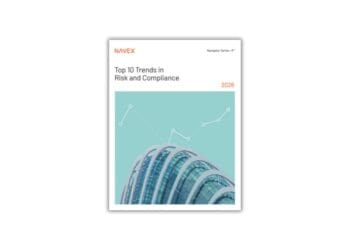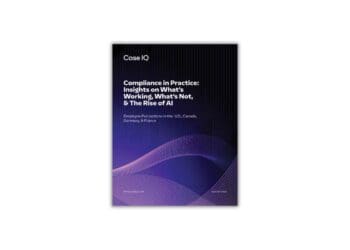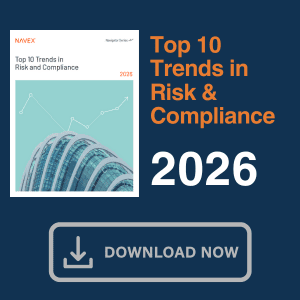Workplace violence prevention rules will go into effect in California this summer, and Ontic’s Marisa Randazzo recommends companies across the country — not just those in the Golden State — consider incorporating the policies.
Editor’s note: The author of this article, Marisa Randazzo, is executive director of threat management for Ontic, a provider of risk management and physical security software.
This year, California will become the first state to require most employers to implement workplace violence prevention plans, train employees on those plans and keep records on all related activities.
Employers across the country are wise to pay attention, as anti-violence laws enacted in California have frequently served as a model for other legislatures, as they did when the state enacted the first anti-stalking law in 1990 and in 2014 with the development of extreme risk protection orders (ERPOs). Today, every state has criminalized stalking and 21 states have something similar to ERPO laws, which allow states to temporarily take guns away from people in crisis.
But there’s another good reason to pay attention. California anti-violence laws can provide a solid framework that employers — even those outside California — can use to develop and implement a plan that meaningfully reduces the risk of workplace violence and ensures compliance at their organizations. Reducing workplace violence risk is good for business, beneficial for employee morale and a company’s bottom line alike and good for society overall.
Here are a few actions every employer, regardless of location, should consider taking around workplace violence in order to benefit their business:
Give employees a channel to quickly and easily report threats, incidents and concerns to the company
Those who engage in violence in the workplace often show threatening or concerning behavior for weeks or months beforehand, so it’s important for businesses to learn about troubling behavior as soon as possible. Whether the perpetrator is a client, a patient, a colleague or a supervisor, employees need to be trained on how to report these incidents, including bullying and harassment, without fear of retaliation.
Establishing a secure and confidential reporting channel enhances workplace safety and fosters a culture of trust and respect. This ultimately leads to increased employee satisfaction and productivity because potential risks are mitigated before they escalate and employees feel safer at work.
(Un)Safe Space: The Changing Picture of Workplace Violence
Incidents of workplace violence have become so commonplace that they often do not make the news anymore, even when they result in multiple victims. But both workplace homicides and workplace bullying have become more common over the past half-decade.
Read moreDetailsKnow what your organization will do if and when workplace violence occurs
Organizations need procedures in place to respond to and investigate incidents. They should also have policies to inform victims — and those who reported the workplace violence incident — of the outcome of the investigation, including what information they are permitted to share.
Organizations may need to walk a fine line between confidentiality and transparency in the wake of a workplace investigation. An absence of transparency can create mistrust, but sharing too much information carries risks to privacy. Setting clear policies means you aren’t reacting on the fly. It also ensures you have a robust and reliable audit trail should the company’s safety and compliance efforts ever come into question by employees, clients, shareholders or regulators.
Put someone in charge and give them the tools to be effective
Too often, we see workplace violence plans that sit untouched on shelves, rarely updated as the company’s needs and threat landscape evolve; only when an incident occurs is action actually taken. As California’s new law requires, organizations can list the name and contact information of the person in charge of implementing a plan, but multiple teams like security, HR, and legal and compliance, should have a hand in creating or updating the policy.
Assigning accountability establishes a solid base for sustained attention to the plan, which can be modified as needed. Using technology that serves as a central repository to research, document, track and report incidents will save time, resources and ensure compliance should a threat materialize.
Adopt a system of record to record and track all incidents of workplace violence and threats
Maintaining a log for every workplace violence incident is a key provision of the new California law, but it’s a good idea for all businesses, as it is considered to be part of best practice for preventing workplace violence generally. Ideally, the system should provide for all incidents to be captured, including additional information on those that lead to investigations or further actions.
Keeping track of all workplace violence incidents and threats will allow organizations to identify trends in these incidents. Do more incidents occur at certain locations, such as those in more remote areas; specific times of day, such as in parking lots after dark; or in particular departments, such as customer service, where an automated system makes it difficult to access a live person? Businesses can learn from their own numbers and trends to identify problem areas and better allocate their security resources to address them.
Include employees in the development of a plan
Over the years, I’ve come across one significant objection to violence prevention planning. Many executives believe that training and planning around workplace violence can create a culture of fear that impacts their relationships with colleagues and the company. Employees can be particularly attuned to the nuances of an organization in a way that management is not.
Involving employees in the development of violence prevention plans leverages their unique insights and experiences, leading to more comprehensive and effective strategies. It also helps socialize and integrate safety into the corporate culture, making it less fear-inducing.
Review the effectiveness of your plan
This item is last on the list because it can only be done after all the other steps are taken and you have a plan in place, but it may be the most important recommendation here. Organizations should keep statistical records of incidents that include date, time, place and other relevant factors.
Regularly reviewing the effectiveness of the violence prevention plan based on collected data not only ensures that the organization is continually improving its safety measures and staying compliant with the law but also demonstrates a proactive commitment to employee well-being in a constantly changing economic environment. This strategic approach can lead to a reduction in incidents, lower costs associated with workplace violence and an enhanced reputation as a responsible and caring employer.
Because physical safety has ramifications for risk management and business continuity, organizations need clear policies that mandate how people or departments work together and a comprehensive audit trail. Given the overwhelming volume of threats and permacrisis environment, the reporting and tracking of workplace violence incidents will create a system that protects both the organization and its people. California’s rules could come to your industry one day, or your state. You don’t need to play catch-up when they do. Taking action now can make your employees feel safer that much sooner.




 Marisa Randazzo is executive director of threat management at Ontic, a provider of risk management and physical security software. A PhD in psychology, she previously was CEO of SIGMA Threat Management Associates, which is now part of Ontic, and a former chief research psychologist for the U.S. Secret Service.
Marisa Randazzo is executive director of threat management at Ontic, a provider of risk management and physical security software. A PhD in psychology, she previously was CEO of SIGMA Threat Management Associates, which is now part of Ontic, and a former chief research psychologist for the U.S. Secret Service. 






